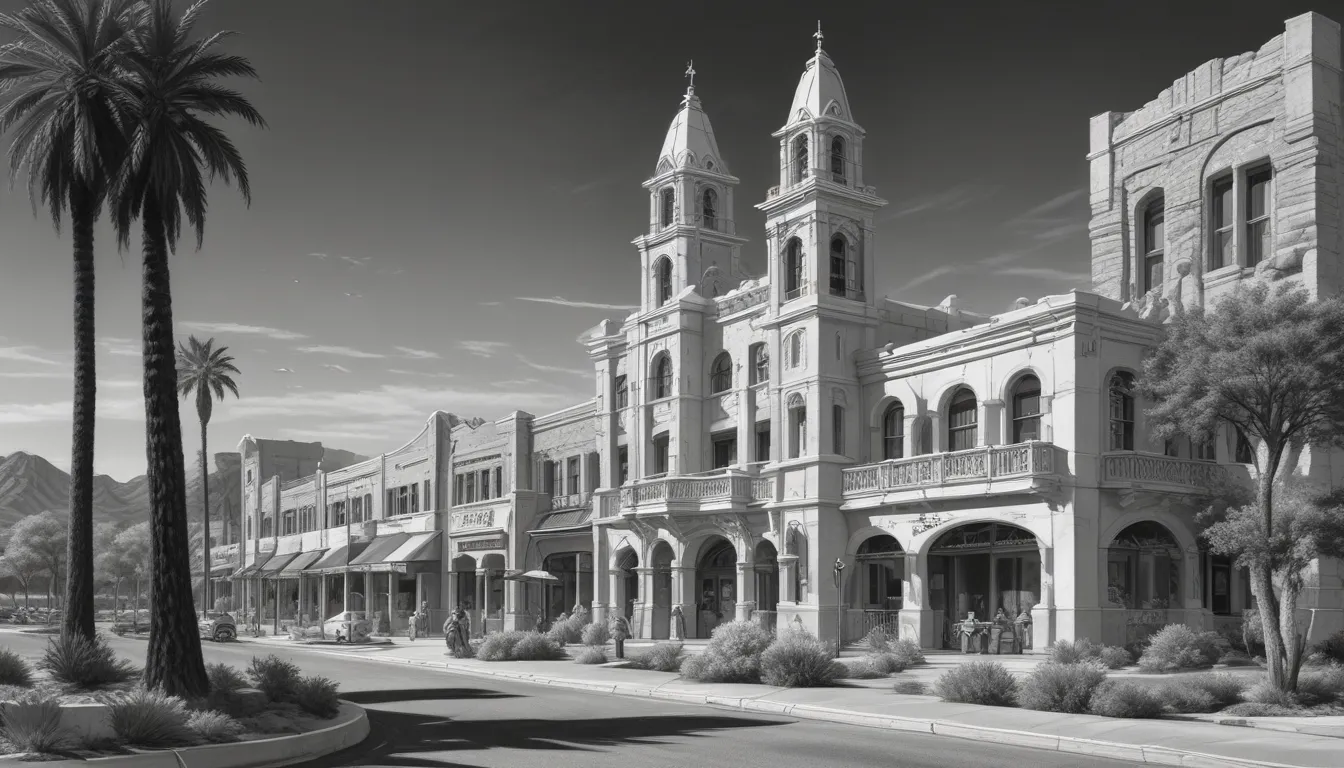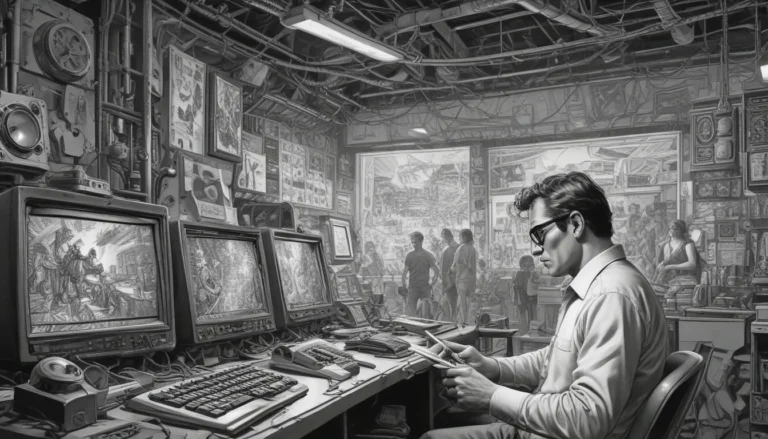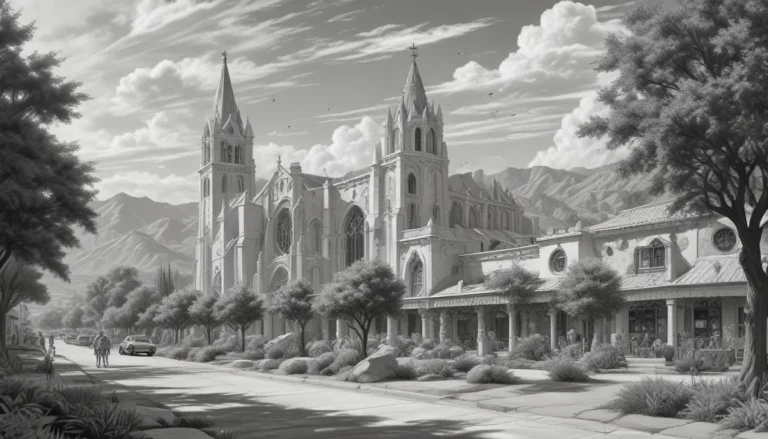The images in our articles are for illustrative purposes only and may not exactly match the content. They are intended to capture your interest and complement the text, not to replace it.
Welcome to Glendale, Arizona, a city rich in history and architectural wonders waiting to be discovered. From iconic structures steeped in heritage to modern marvels that captivate the imagination, Glendale offers a diverse array of landmarks that tell unique stories and contribute to the vibrant tapestry of the city’s urban landscape. Join us on a captivating journey through the architectural wonders of Glendale as we explore the historical, cultural, and aesthetic significance of these captivating landmarks.
Unveiling Glendale’s Architectural Heritage
Glendale’s architectural landmarks serve as gateways to the city’s past, a journey that offers insights into its agricultural roots and industrial prowess. From the Sahuaro Ranch Park Historic Area to the Manistee Ranch, each landmark showcases a different facet of Glendale’s rich history, inviting visitors to delve deeper into its heritage.
The Sahuaro Ranch Park Historic Area: A Glimpse Into Glendale’s Past
Nestled in the heart of Glendale, the Sahuaro Ranch Park Historic Area spans 17 acres and features historic buildings like the Main House, Fruit Packing Shed, and Carriage House. This park offers a captivating look into Glendale’s agricultural history, providing visitors with a chance to explore the city’s past through its well-preserved architectural landmarks.
The Historic Manistee Ranch: Preserving Glendale’s Agricultural Legacy
Listed on the National Register of Historic Places, the Manistee Ranch is a historic citrus orchard and ranch that showcases Glendale’s agricultural heritage. Visitors can immerse themselves in the rich history of the ranch, gaining insight into the city’s pioneering spirit and agricultural legacy that shaped its growth.
The Murphy Park Historic District: Witness Glendale’s Growth
Located in downtown Glendale, the Murphy Park Historic District reflects the city’s evolution through a variety of architectural styles, including bungalows and commercial buildings. Visitors can stroll through the district’s tree-lined streets and absorb the rich tapestry of Glendale’s architectural history, witnessing the city’s growth and cultural significance.
Discovering Glendale’s Architectural Gems
From historic buildings to cultural landmarks, Glendale’s architectural gems offer a glimpse into the city’s diverse heritage and commitment to preserving its legacy. Each site, whether it’s the Glendale Woman’s Club or the Beet Sugar Factory, contributes to the city’s vibrant identity and serves as a beacon of community spirit and historical significance.
The Glendale Woman’s Club: An Icon of Community Engagement
Dating back to 1912 and listed on the National Register of Historic Places, the Glendale Woman’s Club embodies community spirit and civic engagement in Glendale. This architectural gem has been a hub for social connections and community service, making it a must-visit for those wanting to explore the city’s cultural heritage.
The Beet Sugar Factory: A Symbol of Glendale’s Industrial Heritage
The historic Beet Sugar Factory, dating back to the early 1900s, stands as a reminder of Glendale’s industrial legacy. This iconic structure played a crucial role in the city’s economic landscape, contributing to its growth and prosperity. The factory’s architecture and historical significance tell a compelling story of Glendale’s industrial heritage.
The First National Bank of Glendale: A Tribute to Financial History
Dating back to 1910, the First National Bank of Glendale is an architectural gem that embodies the city’s financial history. With its distinctive neoclassical design, the bank building reflects Glendale’s economic evolution and financial legacy. Visitors can marvel at the building’s timeless architecture and gain insight into the city’s financial heritage.
Embracing Glendale’s Cultural Landmarks
From the Glendale High School Auditorium to the Glendale Arizona Historical Society, the city’s cultural landmarks play a vital role in preserving its legacy and celebrating its artistic and educational landscape. These sites reflect Glendale’s commitment to the arts and education, offering visitors a deeper understanding of the city’s cultural heritage.
The Glendale High School Auditorium: A Hub of Culture and History
The historic Glendale High School Auditorium, with its art deco-inspired design, has been a centerpiece of the city’s artistic and educational landscape since its construction. Hosting numerous performances and events, the auditorium is a testament to Glendale’s commitment to the arts and education, leaving a lasting impact on the city’s cultural heritage.
The Glendale Arizona Historical Society: Guardian of Glendale’s Legacy
Dedicated to preserving the city’s rich heritage, the Glendale Arizona Historical Society safeguards Glendale’s legacy for future generations. Housed in a historic building, the society collects and showcases artifacts, photographs, and documents that encapsulate Glendale’s storied past. Visitors can explore the society’s exhibits and delve into the captivating narrative of Glendale’s history.
Conclusion: A Tapestry of Architectural Wonders
Glendale, Arizona, offers a rich tapestry of architectural landmarks that reflect its vibrant history and cultural diversity. From the historic Sahuaro Ranch to the iconic Glendale High School Auditorium, these landmarks tell stories of innovation, community spirit, and artistic expression. Whether you’re a history enthusiast, an architecture buff, or simply someone who appreciates well-crafted structures, Glendale’s architectural wonders are sure to captivate your imagination and deepen your connection to the city’s heritage.
FAQs: Exploring Glendale’s Architectural Delights
-
What makes Glendale, Arizona, a unique destination for architectural enthusiasts?
Glendale’s diverse array of landmarks, including the Sahuaro Ranch and Murphy Park Historic District, make it a unique destination for architectural enthusiasts. These sites showcase a blend of architectural styles and historical significance that appeal to a wide range of interests. -
How can visitors explore the architectural landmarks in Glendale, Arizona?
Visitors can explore Glendale’s architectural landmarks through self-guided walking tours, guided tours by local organizations, and special events that highlight these iconic sites. Additionally, many landmarks offer educational programs and interactive exhibits for a more immersive experience.
Embark on an enlightening journey through Glendale’s architectural wonders, where each landmark tells a unique story and contributes to the vibrant tapestry of the city’s urban landscape. Dive into the rich history, cultural significance, and aesthetic beauty of Glendale’s architectural gems, and discover a new appreciation for the city’s diverse heritage and commitment to preserving its legacy.






